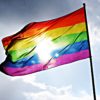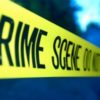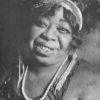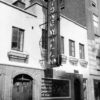Art As Activism

Students will learn about and experience the works of Audre Lorde and James Baldwin and discuss how and why someone might use their passions for activism.

Instructional Resources for California Educators, Students, & Families

Students will learn about and experience the works of Audre Lorde and James Baldwin and discuss how and why someone might use their passions for activism.

In this lesson, students learn to access, study and compare primary-source documents, to research and organize information and to plan, organize and execute a live performance.

The film tells an inspiring story of a young gay man who took a stand against the bullying he experienced in school. It is designed to create empathy for victims and to encourage others to take action.

This lesson explores the ways in which LGBT people, events and issues have been made invisible in mainstream accounts of history. In the first half of the lesson, students reflect on excerpts from Ralph Ellison’s Invisible Man to explore the impact of invisibility on people and as a jumping off point for researching how different groups have been historically marginalized in society. In the second part of the lesson, students participate in a history matching game and listen to LGBT oral histories that increase their awareness of significant LGBT people and events, and the ways in which these topics have been erased from the historical record.

In this lesson students listen to the oral history of an advocate for LGBT family rights, and use her personal story as a vehicle for considering how anti-LGBT attitudes are formed. Students explore the derivation of the words “gay,” “f*ggot” and “d*ke” in order to better understand the long history of judgment and hate behind these words. They also reflect on the testimony of LGBT teens about the impact of terms like “that’s so gay.”

In this lesson, students explore the concept of exclusion on personal and societal levels. After participating in an exercise in which they experience the effects of inclusion/exclusion in a social situation, students do reflective writing in response to historical photographs depicting the exclusion of various groups in society. In the final part of the lesson, students identify ways in which LGBT people are currently excluded from societal institutions, listen to interviews of LGBT people describing their experiences with discrimination and create portraits of the interview subjects that reflect what they have learned.

In this lesson students learn about gender identity and explore the impact of rigid gender role expectations and stereotypes. Using various media—an audio interview and a video of a spoken word performance transgender people and issues are personalized and clarified for students. Students then discuss real-life scenarios depicting conflicts around gender expression in school settings, and brainstorm ways to be an ally to transgender and gender non-conforming people.

Students will examine personal testimonies in order to understand what conditions were like for homosexuals living in Nazi occupied Germany before and during WWII. They will also learn to recognize and analyze the ways in which homosexuals in Nazi occupied Germany responded to persecution and repression.

This activity is designed as a fun and interactive way to raise students’ awareness of LGBT people and the contributions they made in the history of the United States. Students will learn about key events in the LGBT civil rights movement. Students will have an opportunity to create signs regarding these events to spread awareness throughout the school.

When police raided the Stonewall Inn, a gay nightclub in Greenwich Village, on June 28, 1969, gays and lesbians fought back. This marked a turning point in the struggle for gay and lesbian rights in the United States. And more than three decades later, the struggle still continues. In this lesson, students examine the issues that now surround the quest for gay and lesbian equal rights. They explore bias and negative stereotyping in the media and their effect on how gays and lesbians are treated. Along the way, students will examine their own biases and express their opinions on the topic of gay and lesbian rights in a newspaper editorial.